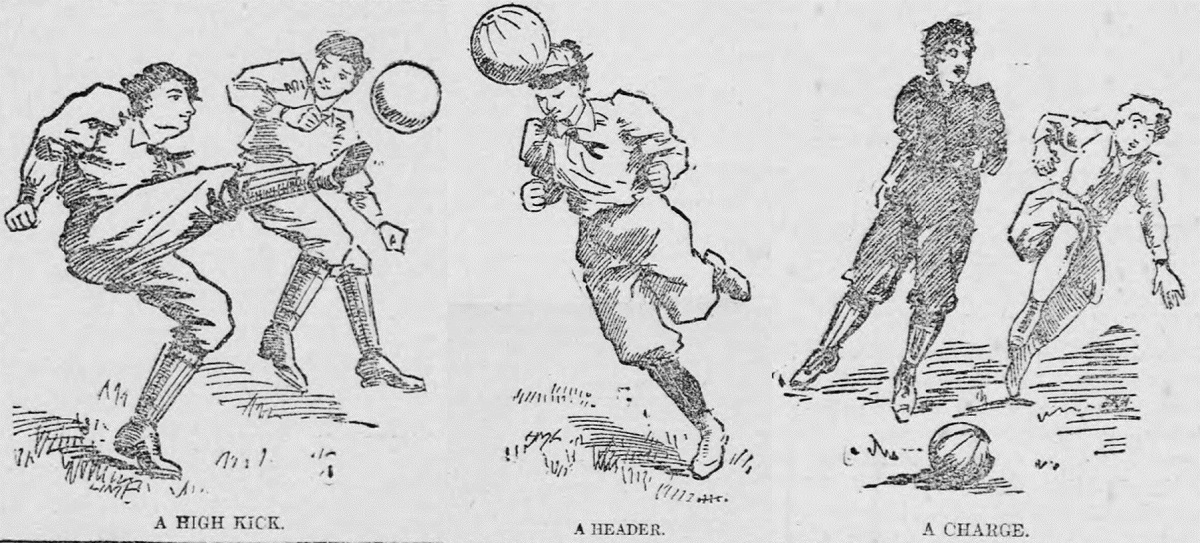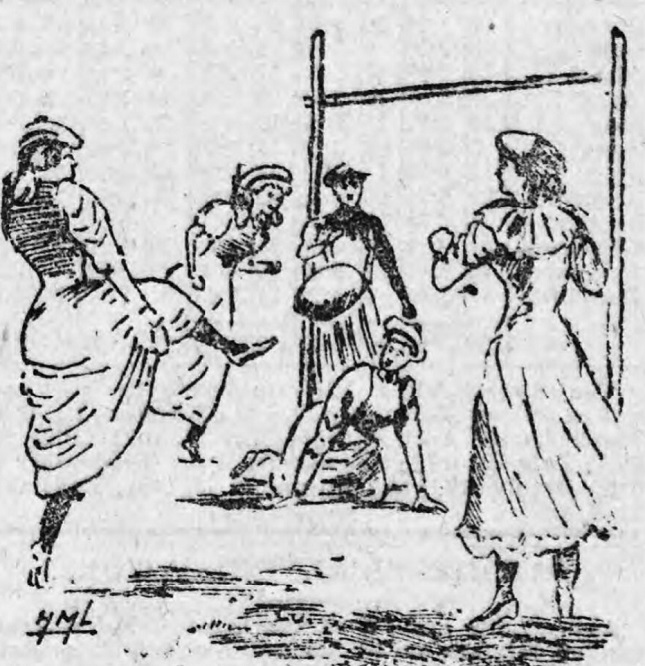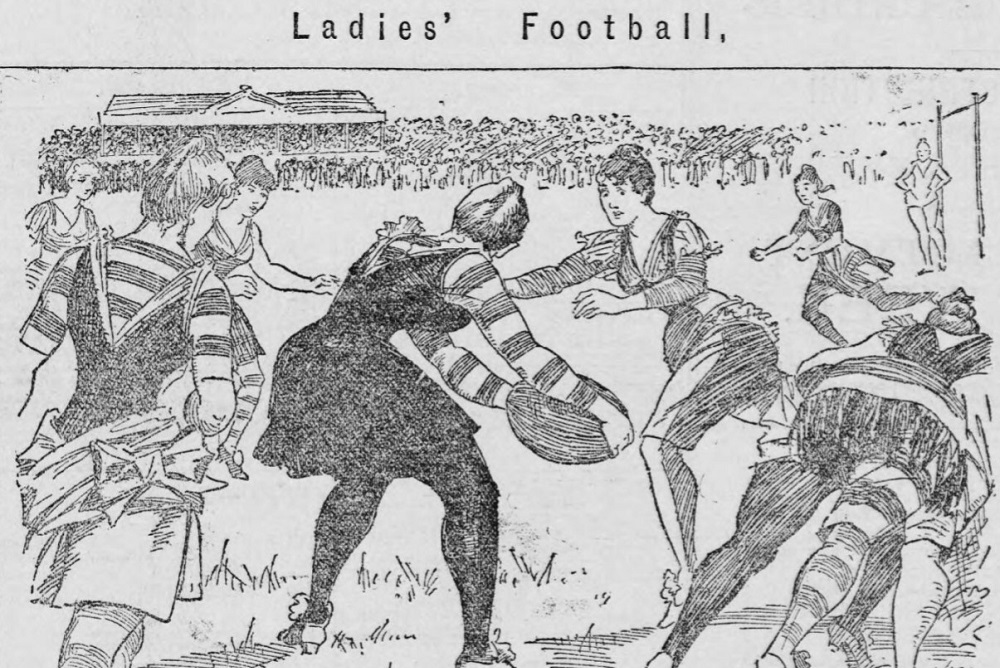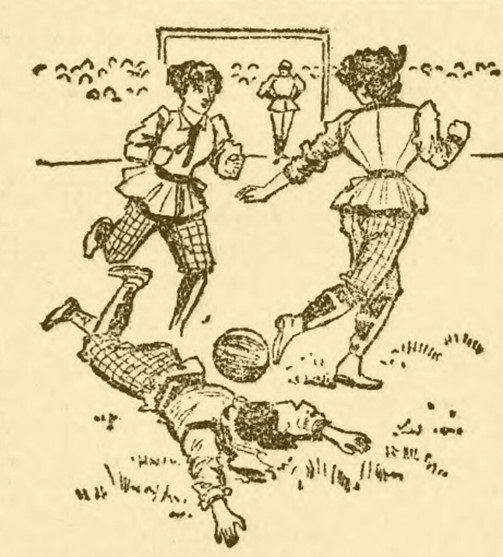The roots of women’s football in Wales

Norena Shopland
Congratulations to the Women’s Archive Wales for securing a grant for their new project Women and Sport: Wales and well done to the England Lionesses for getting to the world cup final and for generating enormous viewing figures – but large numbers turning out to see women’s football is not a new thing.
Women’s sport, like women’s history has been, and still is, a second-class citizen compared to men’s sport and history, and as for a history of women’s sport – well, let’s not go there.
For example, there is currently no written account of women playing football in Wales.
Despite suggestions they had been playing since people first started kicking a ball, games were not regularly recorded until the late eighteen century and were often associated with the theatre, part of the sensational Barnum type of unusual spectacles.
It was not until 1895 that the first female football team of note was formed in London, but their desire to play was not looked on favourably by men as any attempts towards equality, in any subject, was seen as a reversal of gender roles and a usurpation of male dominance. So, women were described as masculine to belittle them, made to seem visually ugly, and early reports are littered with derogatory or lascivious remarks – something still plaguing women’s sport today.
The first known Welsh newspaper commentary on a woman’s football match was in a Cardiff Times column ‘Samuel’s Sentiments’ (1886-1891). Samuel, who wrote on a variety of topics, and appears to have illustrated them himself commentated on a match in 1887 which took place in an unnamed ‘North-country town’ between Madam Kenney’s Famous Edinburgh Team and Madame Wills’ Grimsby Town Team.
Mocking
As with many others articles, the tone was mocking, laced with lasciviousness and at a time when women wearing trousers was considered shocking, most accounts were obsessed with what the women were wearing:
“They having taken off their superincumbent garments, stood revealed attired in – well, attired in the ordinary garments of male footballists, nothing more nor less. I should not like to say that their costume was any better than that usually worn by corpses des ballit, a(s) coryphees are popularly called, but it was certainly no worse. (It couldn’t very likely be worse, but that’s got nothing to do with the case.)
“If fat meant muscularity, some of these females, sir, would have been muscular indeed. In regard to certain of them, I couldn’t but think, on contemplating their bulk, that they had somehow missed their way, and come to the football field instead of going, as they ought, to the agricultural show.
“The enthusiasm—if enthusiasm it was—of the crowd, when the ladies stood fully displayed in all their war paint, vented itself in shouts of laughter, for very stiff (“lumpy,” a friend of mine called) did some of the players look. But the farce went on, and the ladies, after pulling their fringes straight, a little feminine act which they had evidently not yet forgotten, got to work.

After Samuel’s dismissive article, nothing of significance appears in the newspapers until seven years later in 1894, in ‘Football Gossip’ a column for the Western Mail with a footnote about a ladies’ football club starting at Roath, accompanied by an attached illustration of players – which was actually a rugby football match.
In April, the Barry Female ‘football’ players reportedly beat the boys, but in September a satirical cartoon entitled ‘A Suggestion for the Coming Season’ appeared in the Evening Express, titled again, with ‘football’ match but showing rugby – showing how at times the terms could be interchangeable:

By the mid-1890s there were local ‘football’ teams in Newport, Tintern, Pembroke Dock, Tenby and Milford Haven and they were never, wrote the journalist, short of opponents.
The first women’s game of note in the UK was by the British Ladies’ Football Club (BLFC) on 23 March 1895 in London and journalists from around the country went, including the Evening Express and South Wales Echo.
When the Evening Express journalist interviewed Nettie Honeyball (a pseudonym) he made the mistake of asking about husbands, to which she retorted,
“What have they got to do with it? Why shouldn’t ladies play football as well as men? I may tell you we are all homely girls. We don’t want any la-di-da members. We play the game in the proper spirit we allow charging, but no bad temper is ever displayed, and I have never heard a cross word spoken.”
Following this success, the BLFC went on tour including towns throughout Wales but the Evening Express journalist was cautious, ‘with all their eagerness for the game, I wonder will Welsh people tolerate the lady footballer.’

In Cardiff, they appeared at the Harlequin’s Athletic Ground on 18 May 1895 and as usual the reports were derogatory, the Evening Express writing,
‘There is always something fetching about a girl in bloomers and when close upon two dozen damsels of the witching age of nineteen or thereabouts, don masculine unmentionables and nimbly disport themselves on the turf for the benefit, of the public generally, the public are bound to be on the spot to watch the sport.’
A crowd of 7,000 to 8,0000 went to watch, among them the newspaper illustrator who produced some lively pictures.
This was the impetus needed, and women’s football clubs sprang up all over Wales continuing in popularity, particularly during World War I when matches were held to raise war money and were ‘all the rage.’
So much so, that in 1921 the Football Association prohibited women players from using all Association affiliated ground and although it didn’t stop them playing, women had to find other locations.
Lack of funding and difficulty in finding grounds meant the women’s game began to decline and did not find the same kind of popularity until recently.
What we need to do now, is have women’s football in Wales properly recorded and the Women’s Archive Wales project will aid enormously in that.
Support our Nation today
For the price of a cup of coffee a month you can help us create an independent, not-for-profit, national news service for the people of Wales, by the people of Wales.




